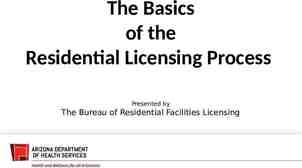Courtroom Roles and Responsibilities
23 Slides2.29 MB
Courtroom Roles and Responsibilities
Introduction The courtroom is made up of various roles that perform specific functions. The roles are vital in having a criminal justice system that is fair and just. We will be looking at what these roles are and what function they serve in the courtroom.
Courtroom Roles Police Officer Prosecutor Defense attorney Judge Defendant Victim Bailiff Court reporter Jury
Police Officer’s Responsibilities Tell the facts of the case Has worked directly on the case Positive results seen if: Precaution was taken at the crime scene Case management was high quality Review the report before the trial A good report will jog the memory Discuss the report with the prosecutor before the trial (should NOT be told what to say)
Police Officer’s Responsibilities Appearance enhances or diminishes the reputation of the officer and the police department Wear the uniform or formal wear
Prosecutor’s Responsibilities Representative of the state Usually, at least two prosecutors are assigned to the courtroom for each trial. Opens the trial with an opening statement Intended to “wet the appetite” of the jury regarding the topic of the trial and Why the defendant is guilty Present the evidence to the jury
Prosecutor’s Responsibilities Presents their case to the jury first Gives a closing statement to the jury at the end of the trial Summarizes why the defendant is guilty Given after the defense attorney’s closing statement
Defense Attorney’s Responsibilities Representative of the defendant May be employed by the defendant or May be appointed by the state to represent the defendant
Defense Attorney’s Responsibilities Gives an opening statement after the prosecutor Intended to inform the jury that their client is innocent As they will be convinced of when the trial is over Presents his or her case to the jury after the prosecution has presented its case Gives a closing statement when done with the case Should summarize the case for the jury and Emphasize why the defendant is innocent
Prosecutor’s and Defense Attorney’s Responsibilities Direct Examination – the first series of questions asked of the witness by the prosecutor or defense attorneys when they are presenting their case Cross-Examination – the first series of questions asked of the witness by the prosecutor or defense attorneys when the other side is presenting their case
Prosecutor’s and Defense Attorney’s Responsibilities Redirect Examination– when the prosecutor or defense attorneys are allowed to ask questions after their witness has been cross-examined by the other side Recross-Examination– when the prosecutor or defense attorney can ask questions of the other side’s witness after that witness has been redirected
Prosecutor’s and Defense Attorney’s Responsibilities The prosecutor and the defense attorney have the duty to object to the judge when the other side is violating proper courtroom procedure. An objection prevents illegal questioning
Judge’s Responsibilities The judge: Is referee in the courtroom Has the final say on everything that happens in the courtroom (except the jury’s verdict) If the defendant has waived his or her right to a jury trial, then the judge also decides the guilt or innocence of the defendant
Judge’s Responsibilities The judge makes two types of rulings on objections: Sustained– the witness is NOT allowed to answer the question that has been asked of them Overruled– the witness IS allowed to answer the question that has been asked of them
Defendant’s Responsibilities The defendant is: The person accused of committing the crimes and Is protected by the 5th amendment from testifying against his or her self in court If the defendant chooses to testify, they will be questioned by the prosecution as well as the defense
Victim’s Responsibilities The victim is: The person who the crime was committed against Usually called to testify during the course of the trial
Bailiff’s Responsibilities The bailiff: Is a certified peace officer that maintains order in the court Administers the oath to anyone who takes the stand Takes things to and from the judge Does anything else that the judge needs him or her to do
Court Reporter’s Responsibilities The court reporter: Is an employee of the court who records everything that is said in the trial Goes to a school where they learn how to take notes using a style called shorthand These notes are official documents that may be used as reference in future court proceedings.
Jury’s Responsibilities The jury: Consists of 6 to 12 U.S. citizens Selected before the trial by the prosecutor and defense attorney The judge has the final say on who can serve on the jury Observes the trial Decides on the guilt or innocence of the defendant
Jury’s Responsibilities The jury: Must be unanimous in their decision If not unanimous, it is a hung jury and a new trial has to take place with a different jury May also be asked to decide what the punishment of the defendant should be if they are found guilty
Proper Courtroom Testimony A witness is anyone who is called to testify at a trial The following information will assist a witness in performing at an effective and professional level.
Proper Courtroom Testimony Witnesses should: Be confident Not look at the jury, judge, or the accused when walking into the courtroom When taking the oath, look at the person administering it Sit up straight and keep their hands in their lap, not near the mouth Answer questions loudly and clearly Make eye contact with the jurors when answering the questions
Proper Courtroom Testimony Witnesses should: Address the judge as “Your Honor” if it is necessary to ask the judge a question Make sure they understand the question before answering it Stop talking if an objection is made, until the judge has made a ruling Always tell the truth Admit when they make mistakes Know the facts but not memorize the testimony




























